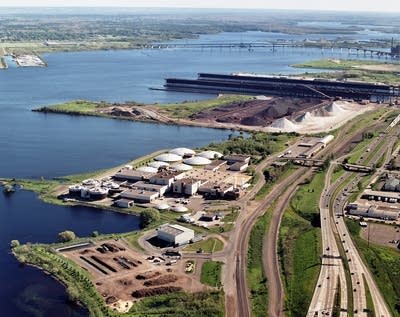Scientists concerned about antibiotic resistance in wastewater
Go Deeper.
Create an account or log in to save stories.
Like this?
Thanks for liking this story! We have added it to a list of your favorite stories.

Scientists gather in St. Paul today to discuss a category of pollution called emerging contaminants — new substances they don't know enough about to label harmful to the environment and human health.
Researchers are particularly troubled by a contaminant that may flourish in wastewater treatment plants: antibiotic-resistant bacteria. Antibiotics are now so widely used — in medicine, in agriculture and cleaning products — that some bacteria are quickly evolving to defy treatment for deadly diseases.
Designed to protect the environment, wastewater treatment plants have dramatically cleaned up many rivers that were once open drains for human waste. They typically employ beneficial bacteria to consume wastes. But researchers say the bacteria used in the plants may be mixing with harmful bacteria.
"The idea is the bad bacteria generally die off," said Amy Pruden, an associate professor of civil and environmental engineering at Virginia Tech. "But the good bacteria are flourishing, and might be able pick up that genetic material, and then propagate it, and then it becomes a reservoir, and increases just the whole background pool of resistance that can go out in the environment and be a potential source of exposure."
Turn Up Your Support
MPR News helps you turn down the noise and build shared understanding. Turn up your support for this public resource and keep trusted journalism accessible to all.
Pruden said researchers are concerned about new strains of bacteria because people are showing up in emergency rooms with resistant infections for which doctors cannot identify a source.
She said her research shows the mix of good and bad bacteria in wastewater treatment plants probably creates bacteria that cannot be controlled with antibiotics.
Among the places scientists are studying is Duluth's treatment plant on the St. Louis River, located between Lake Superior, with its vast stretch of clean water, and an area upstream of the plant where the river bank is mostly undeveloped.

Timothy LaPara, an environmental engineer at the University of Minnesota, took water samples in several places to pinpoint where antibiotic-resistant bacteria were present at elevated levels.
"What we saw was resistance was very low upstream of the city," LePara said. "In the harbor it was higher, in the wastewater outfall it was much higher, and then out in Lake Superior it was very low again, which allowed us to — with a great deal of certainty — conclude that the wastewater treatment outfall was the primary source of antibiotic-resistant genes in the harbor."
One gene linked to antibiotic resistance was 20-times as common in the outflow of the treatment plant as in other samples.
LaPara said the bacteria-resistant genes can be captured by filtering the water thoroughly.
The Duluth plant uses a filter of anthracite coal, silica sand, fine garnet and gravel to trap harmful wastes.
La Para said that if resistant genes survive the multi-stage filter, other wastewater treatment plants probably are also creating pools of antibiotic-resistant bacteria. Most treatment plants in the United States don't have that level of treatment, he said.
If so, people could be exposed to such bad bugs by swimming in rivers and lakes where treatment plants discharge water, or even by drinking tap water.
Duluth gets its drinking water from Lake Superior. It is treated thoroughly, but La Para said tiny amounts of antibiotic-resistant material have been detected in drinking water in other studies.

La Para said the research is just beginning. He said scientists must assess how much of a threat the substances might pose to human health.
"Our technologies have gotten so good to detect a lot of these compounds," La Para said. "It's now a question of when does the risk become so significant that we want to further remove them? Is it a part per billion? A part per trillion?"
More research is needed to determine that risk, La Para and Pruden said. In the meantime, they say wastewater treatment plants could consider adding another layer of treatment such as membrane filters or chemicals to kill all the organisms.
Dear reader,
Your voice matters. And we want to hear it.
Will you help shape the future of Minnesota Public Radio by taking our short Listener Survey?
It only takes a few minutes, and your input helps us serve you better—whether it’s news, culture, or the conversations that matter most to Minnesotans.





